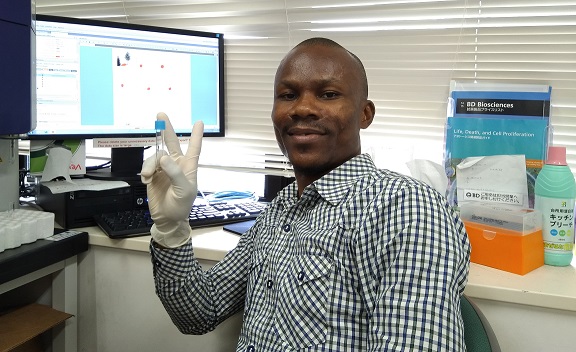People are often confused by differences between Good Laboratory Practice (GLP) regulations and Good Manufacturing Practice (GMP) regulations as they relate to laboratory testing. This is understandable, since both GLPs and GMPs cover lab testing but are very different. In addition, scientists and quality control/quality assurance personnel participating in GLP and GMP studies play different roles.
GLP and GMP regulations pertaining to testing serve two different purposes. The GLPs are designed to protect scientific data integrity, and to provide the EPA or FDA with a clear and auditable record of open-ended research studies. In contrast, the GMPs are intended to demonstrate to the FDA whether or not individual batches of a regulated product are manufactured according to pre-defined manufacturing criteria.
In general, “lot release” or “lot conformance” testing of regulated products produced for sale, like finished pharmaceuticals, should be done under GMP. Safety testing and efficacy testing should be done under the GLP testing regulations. It is a matter of debate whether validation studies should be done under GLP or GMP. It may depend on what is being validated; in some cases either GLP or GMP may be appropriate.
The table below was assembled to summarize key differences between the GLPs and GMPs with regard to lab testing.
The table below was assembled to summarize key differences between the GLPs and GMPs with regard to lab testing.
| Topic | GLP | GMP |
| Study Director | Single point of contact for the study, with overall responsibility and control of the study and its components. Appointed by Testing Facility Management. | No Study Director assigned or appointed. No single point of contact is required. |
| Quality Assurance Unit vs. Quality Control Unit | Quality Assurance Unit inspects critical phases of each study and periodically inspects the facility to inform Testing Facility Management of the integrity of the studies and compliance or non-compliance with the GLPs. Is entirely separate from the personnel engaged in the study. Is oversight function only, not quality system or control. | Quality Control Unit has responsibility and authority to approve or reject all procedures and aspects of testing/manufacturing. Is overall quality system. |
| Testing Facility Management | Is responsible for designating a Study Director with appropriate education / training for each study. Ensures there is a Quality Assurance Unit separate from the personnel engaged in the study. Ensures facility, personnel, equipment, etc. is available and complies with the GLPs. | Supervisors should have proper training. Responsibilities should be in written procedures and followed. Is oversight function. |
| Type of Testing Conducted | Open-ended determination of product performance, often for submission to the EPA or FDA for pre-market approval. | Determination of whether or not the product/sample has met manufacturing specifications. |
| Facility | Design and construction must be suitable to the type of testing conducted, with separation of areas for minimizing mix-ups/contamination. Lighting, plumbing, sewage, washing facility regulations are not mentioned under GLPs. | Design construction must be suitable to the type of testing conducted, with separation of areas for minimizing mix-ups/contamination. Lighting, plumbing, sewage, and washing facility requirements are specified under GMPs. |
| Equipment | Equipment must be appropriate, maintained, and the state of equipment documented to provide study reconstructability. Data-generating equipment is calibrated. | Equipment must be qualified for use in manufacturing processes. Data generating equipment for product testing purposes is calibrated. The accuracy, sensitivity, specificity, and reproducibility of test methods shall be established and documented. |
| Standard Operating Procedure (SOP) / Written Procedure | Drafted by any qualified personnel, approved by Testing Facility Management. | Drafted by any qualified personnel, approved by Quality Control Unit. |
| Standard Operating Procedure (SOP) / Written Procedure | Each study requires a specific study protocol indicating study objectives and methods for conduct and is approved by both the Study Sponsor and Study Director prior to initiation. Protocol overrides SOPs. | Study-specific protocols are not required. Standard written procedures are followed. |
| Master Schedule | An index of all studies is maintained by the Quality Assurance Unit. | Master Schedule is not addressed. |
| Records and Reports | Signature or initials of personnel conducting all procedures, preparations, calibrations, etc. are required along with dates completed and must be on all records. Records are maintained in secure archives for at least 5 years following date of registration if used to support a marketing permit or 2 years following study completion/termination. Archivist is responsible for archives and ensures security of documentation. | Signature of both the personnel conducting procedures and personnel verifying steps of procedures must be on all records (dual control of procedures/records). Records are maintained (not specified in archives) for at least 1 year following product expiration date. |
| CAPA System | Not required. | Required. |
Source:
www.certara.com/2013/12/09/what-is-glp-good-laboratory-practice/?
www.ispe.org/initiatives/regulatory-resources/gmp/what-is-gmp
www.who.int/biologicals/vaccines/good_manufacturing_practice/en/
www.microchemlab.com/information/what-difference-between-glp-and-gmp-laboratory-testing-regulations
Discover more from #1 Microbiology Resource Hub
Subscribe to get the latest posts to your email.



